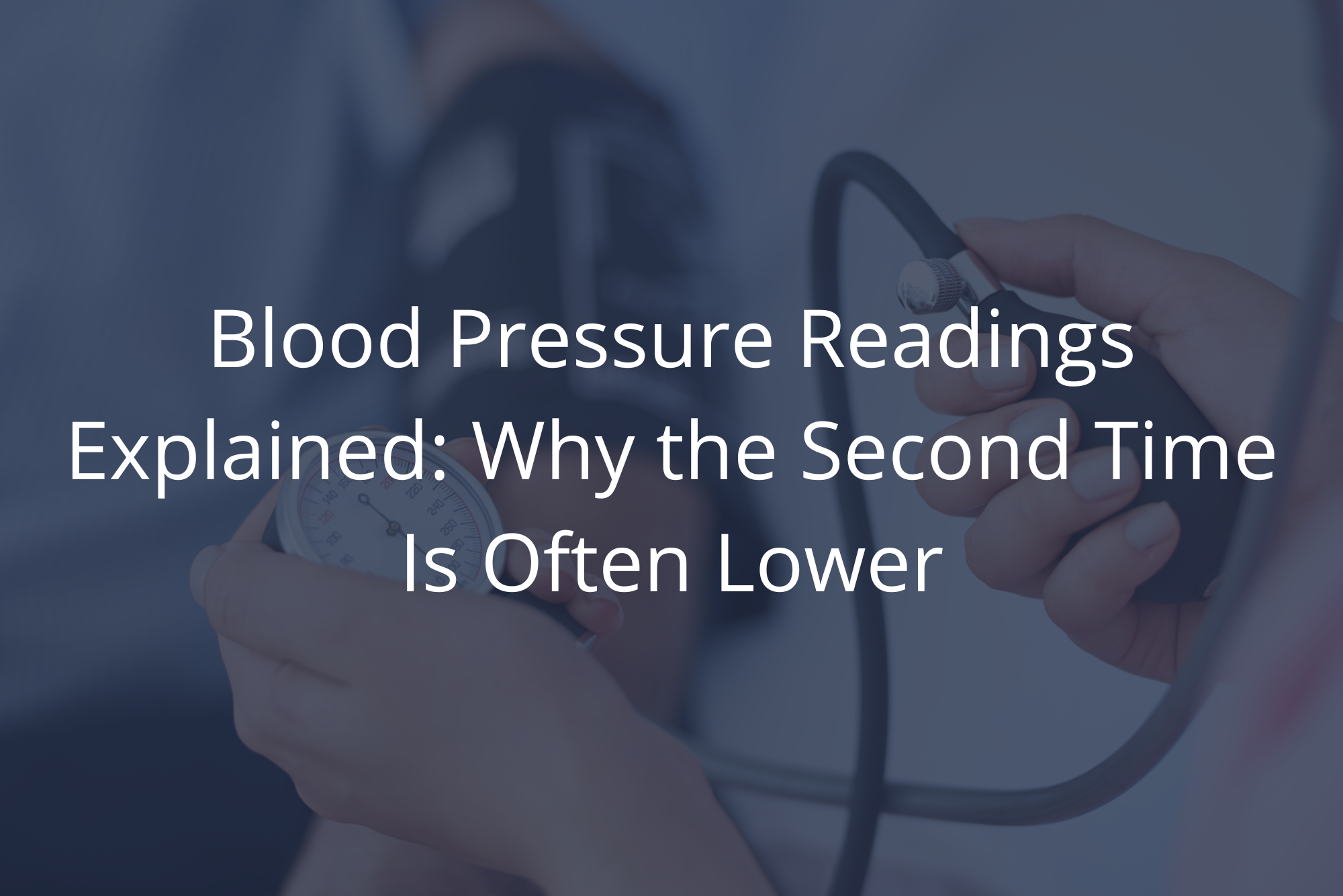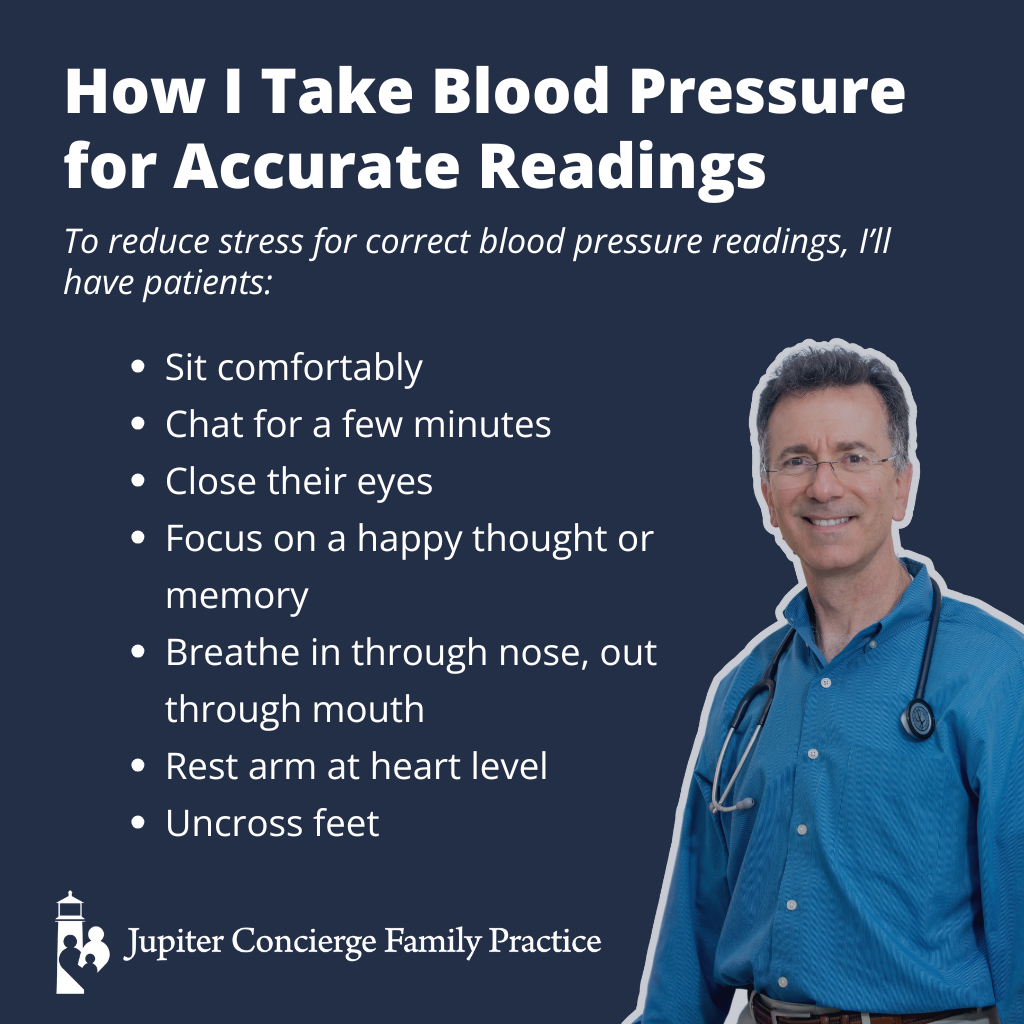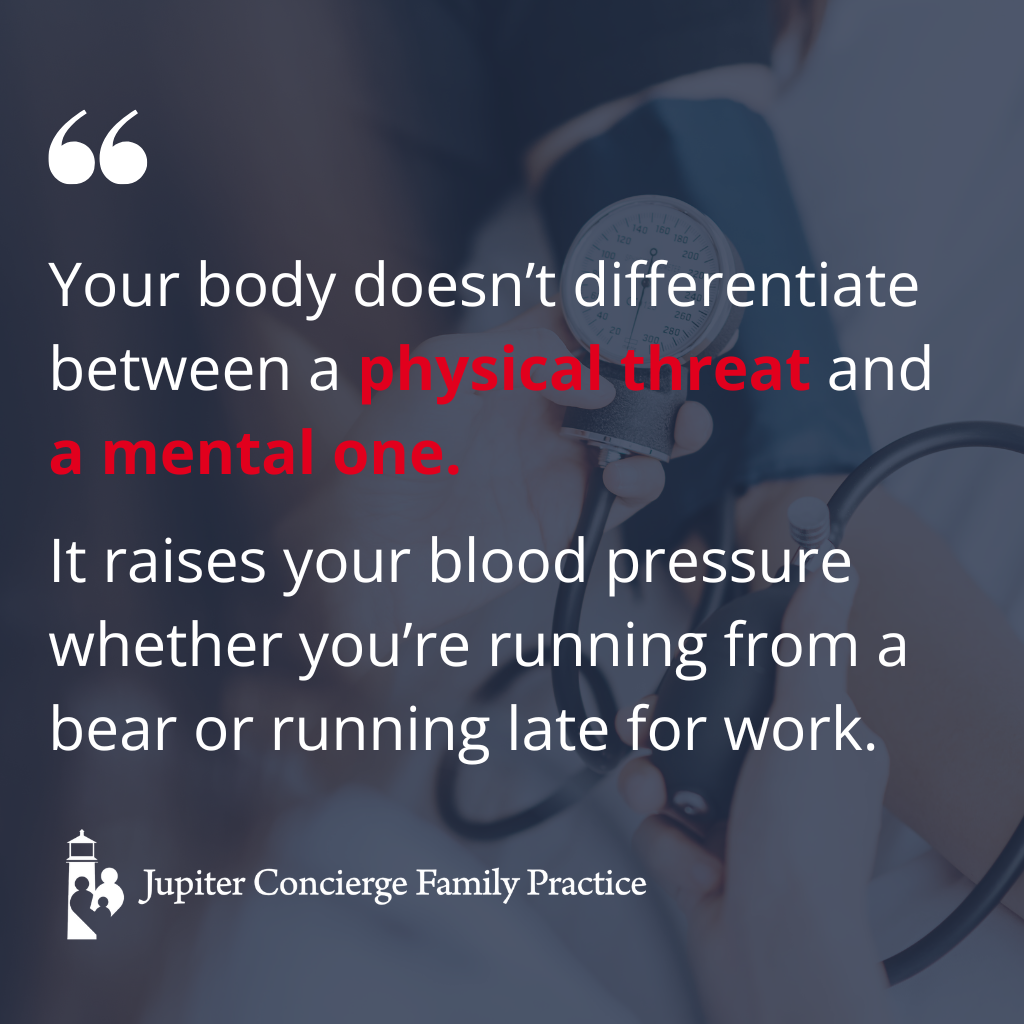
A question has been circulating the internet, and it’s a good one: Why is blood pressure lower the second time I take it?
This seemingly odd phenomenon isn’t your imagination. It’s real, it’s common, and I’ve seen it countless times in my practice.
So, what’s going on here? And why does it matter?
Let’s get into the details: what’s happening in your body, how I approach blood pressure in my practice, how to ensure you’re always getting accurate readings, and how to avoid unnecessary alarms about your cardiovascular health.
Blood Pressure Readings: A Fluctuating Metric
Blood pressure is one of the vital signs we take in any medical setting, right alongside temperature, heart rate, height, weight, and oxygen saturation. These are all critical to your health and very easy to measure.
Unlike height, however, blood pressure measurement can be a little tricky. This highly dynamic metric can change from one moment to the next — but that’s exactly what it’s supposed to do.
Why? If you’re exercising or in danger, your heart begins pumping harder and faster to send more oxygenated blood to your muscles, getting them ready for action. The same is true when you’re stressed, scared, or anxious.
Your body doesn’t differentiate between a physical threat and a mental one. It raises your blood pressure whether you’re running from a bear or running late for work.
This is why your blood pressure might rise when you walk into a physician’s office. For many people, doctor’s visits are stressful experiences — rushing through traffic, sitting in a waiting room, not knowing what the doctor will say.
Of course, as a concierge physician, I’ve had the privilege of structuring my practice to avoid many of those stressors for patients. But the fact remains that a whole host of variables can cause stress on the way to an appointment. So, your initial reading may be elevated simply because your nervous system is on high alert.
A Different Approach: How I Take Patients’ Blood Pressure
If I see a high blood pressure reading on the first check, especially when I don’t expect it to be elevated, I don’t immediately jump to a “high blood pressure” diagnosis for the reasons mentioned above.
Instead, I pause and reset the environment.

My office looks more like a living room than a clinic, and that’s intentional. In this environment of soft lighting and cozy seating, I make sure the patient is sitting comfortably, lower my voice, and chat with them for a few minutes.
I then have them close their eyes and focus on a happy memory or image that makes them feel relaxed and at ease. They breathe in through their nose and out through their mouth, without speaking, and with their arm supported at their heart level and feet uncrossed.
After about 30 seconds, I gently place the blood pressure cuff and take a reading again. Almost always, that second reading drops by 20 — or sometimes even 30 — points.
So, why is your blood pressure lower the second time you take it? It’s not a trick. It’s simply how your body reacts when it’s given a moment to calm down.
Why Take Your Blood Pressure at Home
While in-office readings are useful, the most meaningful data comes from what’s happening in your normal environment. Blood pressure charts and guidelines are based on resting blood pressures, not blood pressures of people who are late and stuck in traffic.
If you’re not already taking your blood pressure at home, I suggest purchasing a monitor from a reliable brand, such as OMRON, and ensuring its accuracy. I often ask my patients to bring their blood pressure monitors to my office so we can check their readings against my calibrated equipment.
Next, I suggest keeping a log: date, time, blood pressure reading, and what’s happening around that time. Limit readings to once, maybe twice a day at most. More than that can make you anxious and actually skew your readings higher. The goal is reliable, relaxed data, not obsessive monitoring.
With your home blood pressure log, you now have a record of your resting blood pressure over time, which you can bring to your regular doctor’s appointments. This will give you and your physician much better insight into the average state of your blood pressure.
Why It Matters: Overtreatment and Side Effects
High blood pressure from stress in a medical setting is so common that we even have a name for it: white coat syndrome.
So, what’s the problem? If that’s the only reading a doctor bases decisions on, you could end up on medication you don’t actually need. And the side effects of lowering your blood pressure more than necessary are very real: dizziness, lightheadedness, fatigue, even fainting.
If your systolic (top number) pressure is consistently over 180 and your diastolic (bottom number) pressure is over 105, even at home, that needs to be addressed immediately. At those levels, you’re at risk for heart attack, stroke, kidney damage, and more.
But if your reading is just elevated during a stressful moment, that doesn’t mean you need lifelong treatment. What you need is an accurate representation of our blood pressure on average and at rest.
Why Blood Pressure Is Lower the Second Time You Take It: Final Thoughts
So, why is blood pressure lower the second time you take it? Because your body reacts to your emotional state, your environment, and your physical activity. If we don’t account for those variables, we risk misinterpreting what’s really going on.
Next time you’re in a situation where your reading is high, take a moment. Breathe. Get to your happy place. Wait a minute, and check it again.
That second reading will likely come down. And that’s the reading that should guide your care.

Dr. David Rosenberg
Dr. Rosenberg is a board-certified Family Physician. He received his medical degree from the University of Miami in 1988 and completed his residency in Family Medicine at The Washington Hospital in Washington, Pennsylvania in 1991. After practicing Emergency Medicine at Palm Beach Gardens Medical Center for two years, he started private practice in Jupiter, in 1993. He is an avid baseball fan and Beatles fanatic, since he was 8 years old. He has been married to his wife, Mary, since 1985 and has three grown children.
David completed additional studies at Mercer University, Macon, Georgia and obtained a BS in Chemistry in 1983.
“My interests include tennis, snow skiing, Pilates and self-development.”

